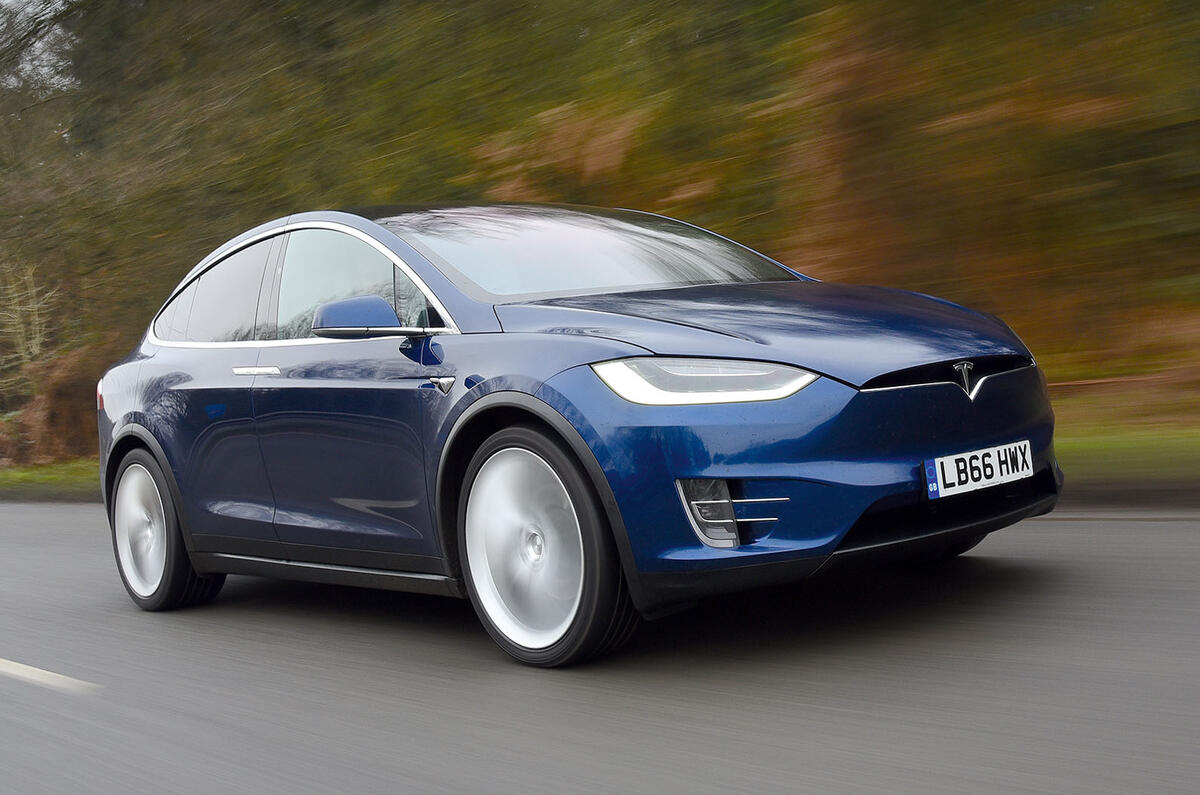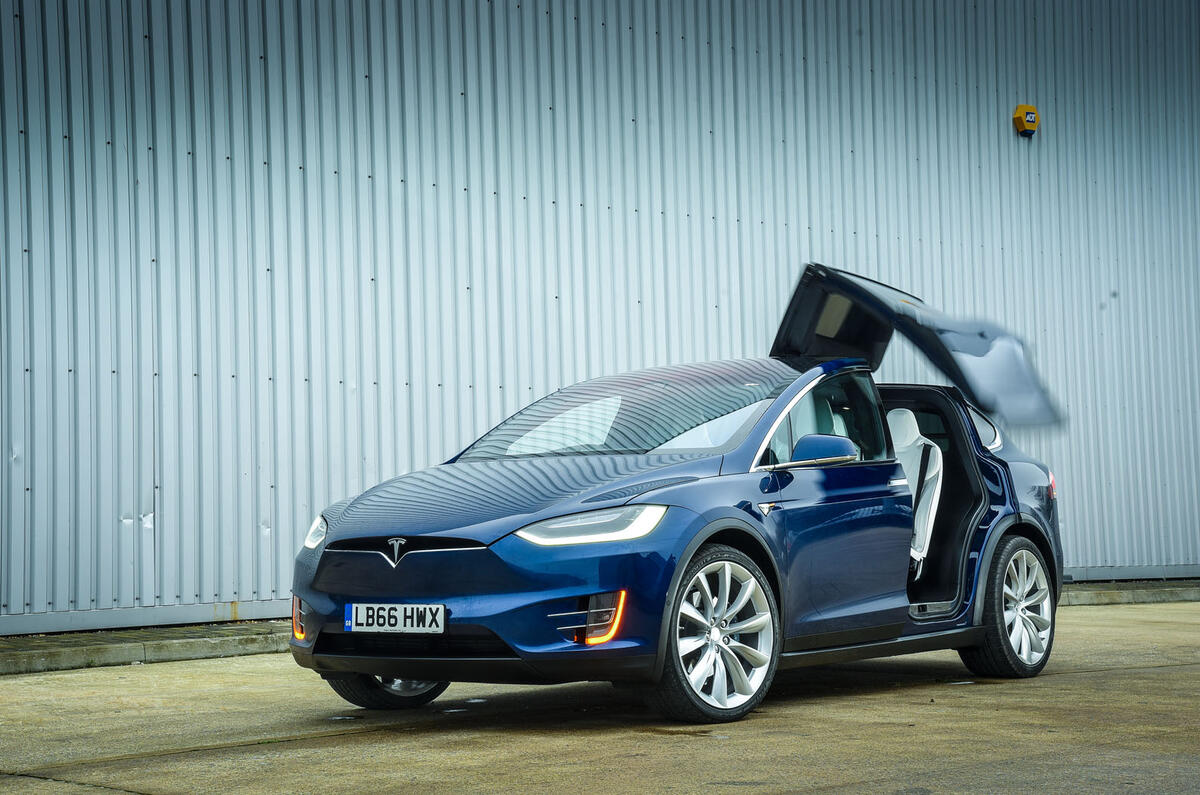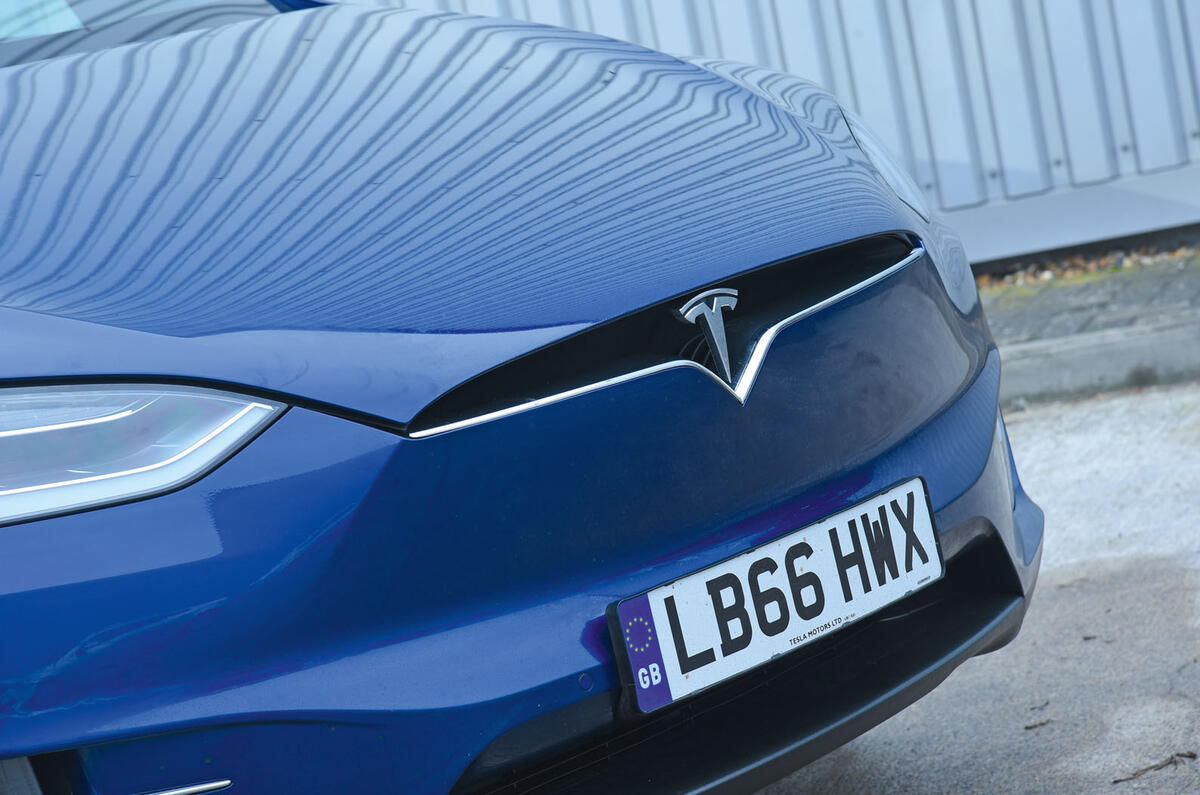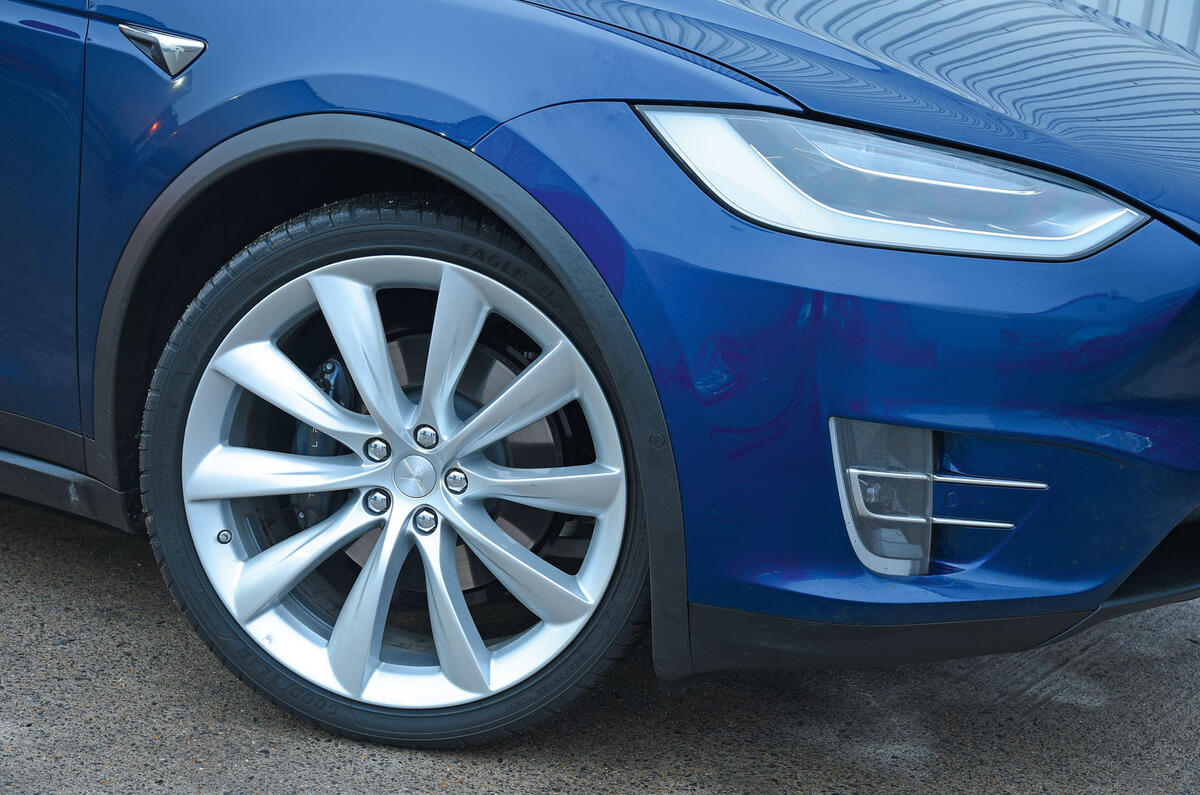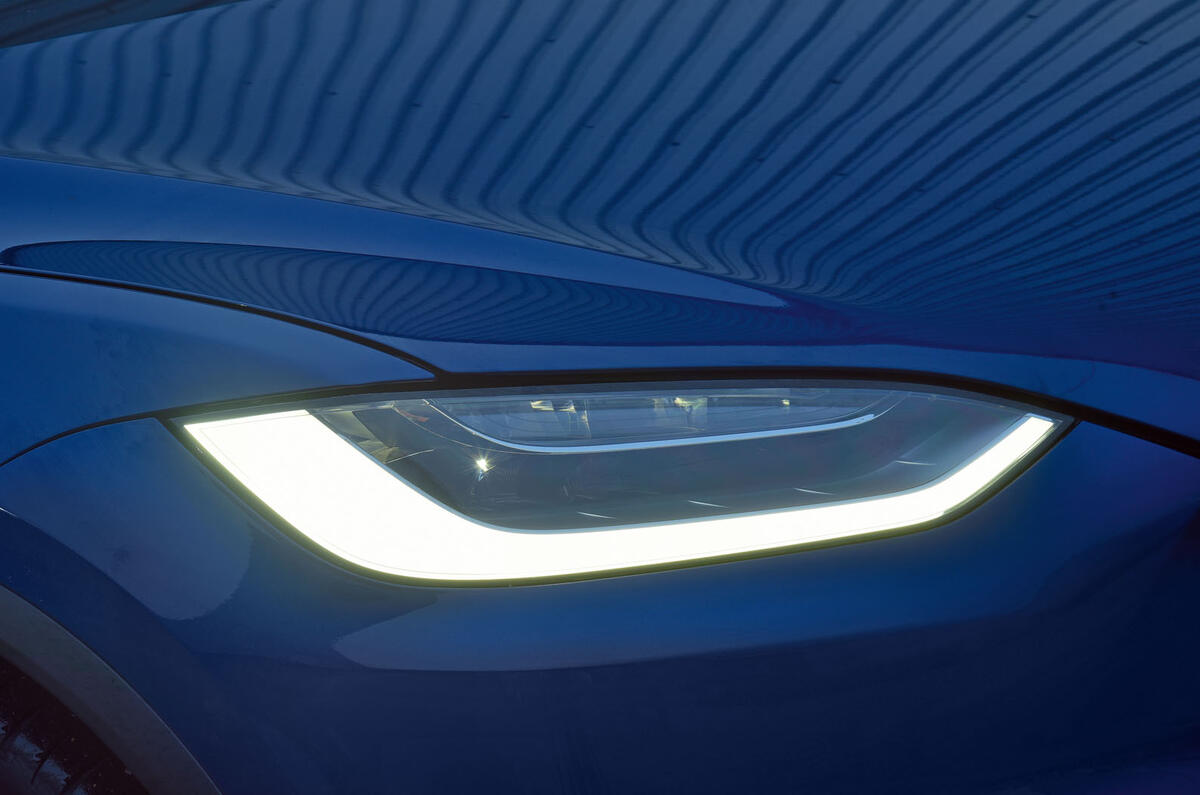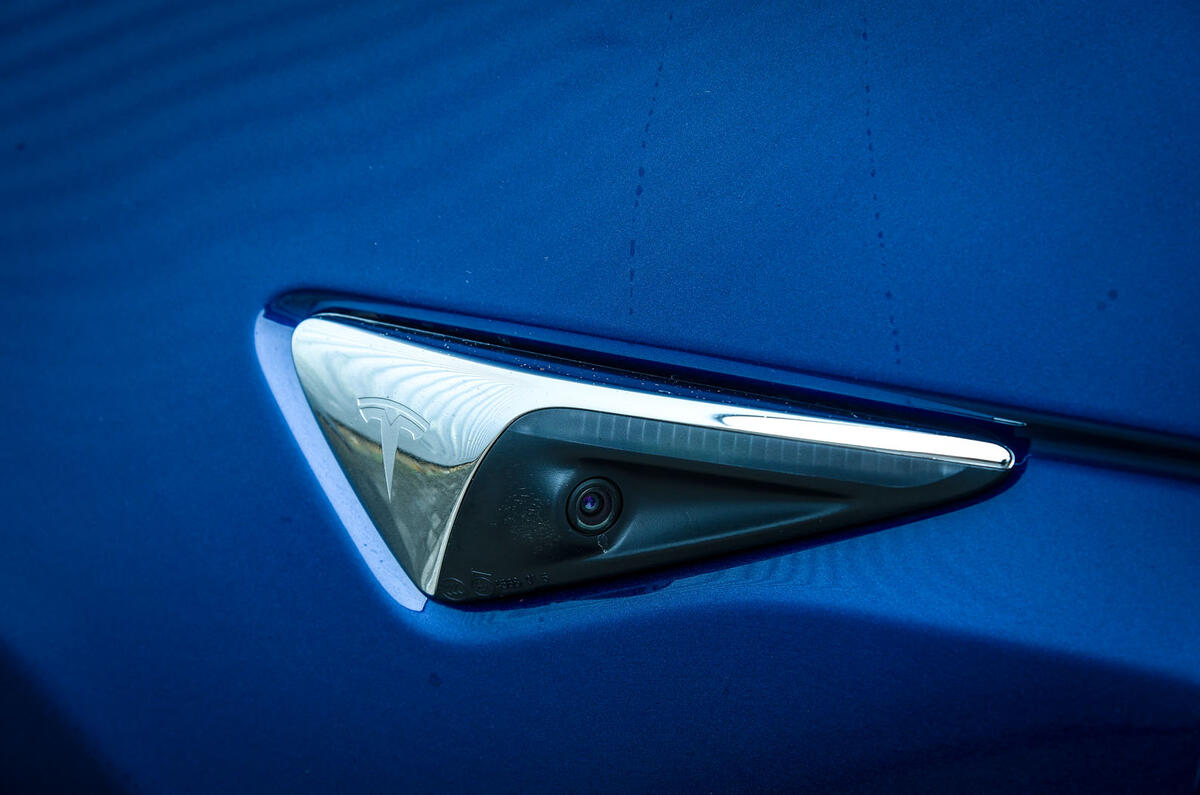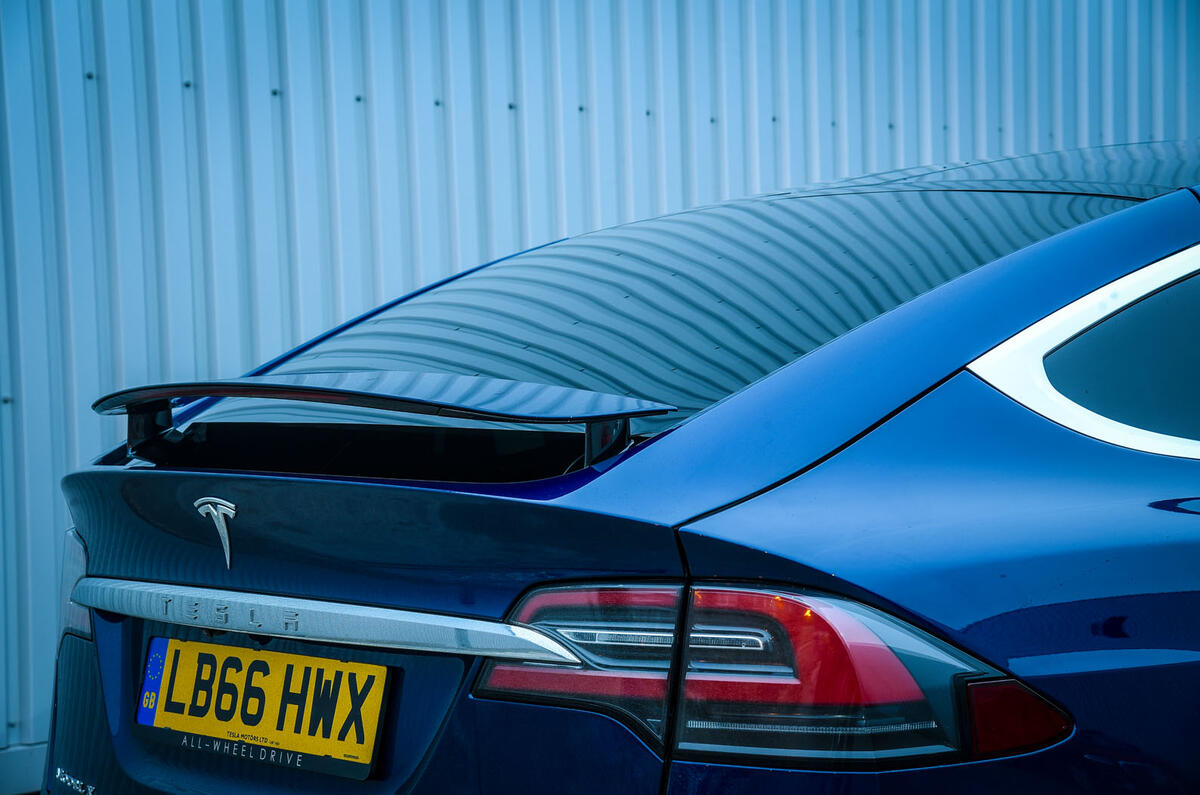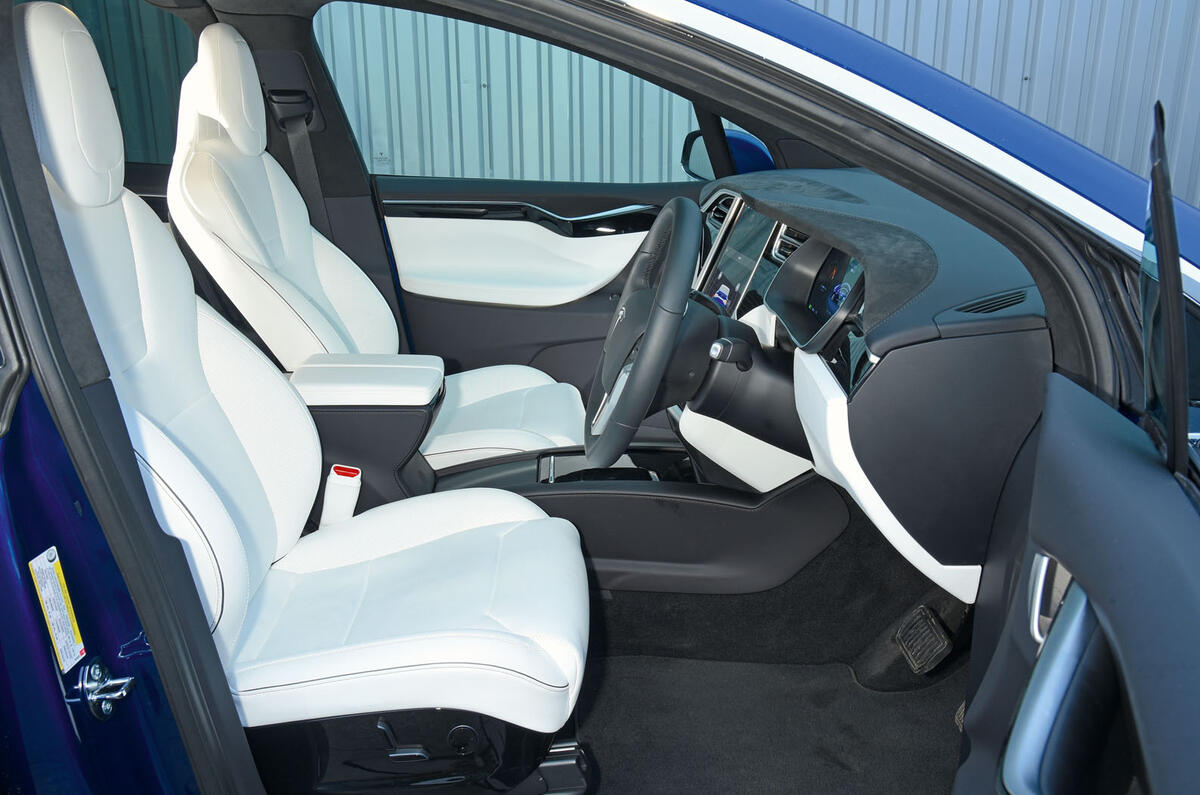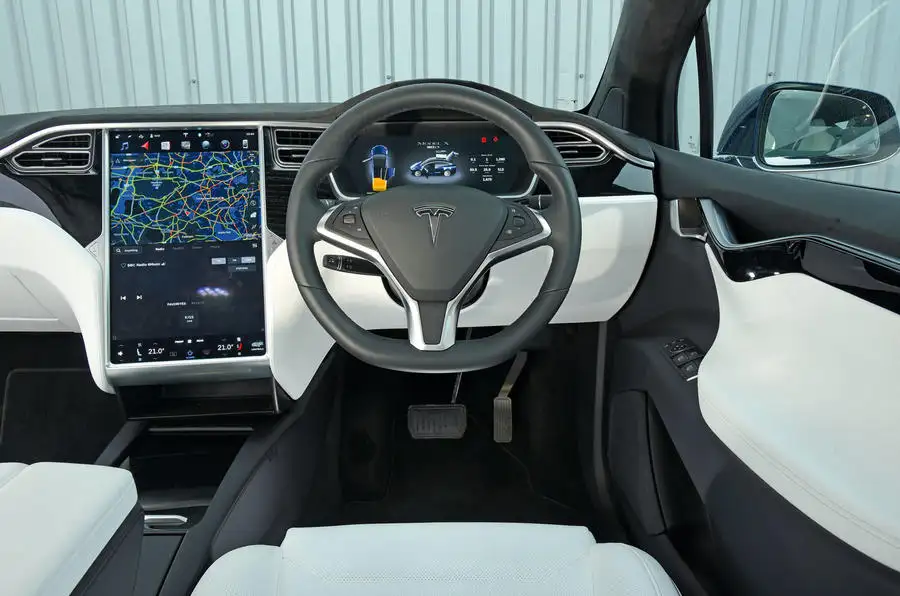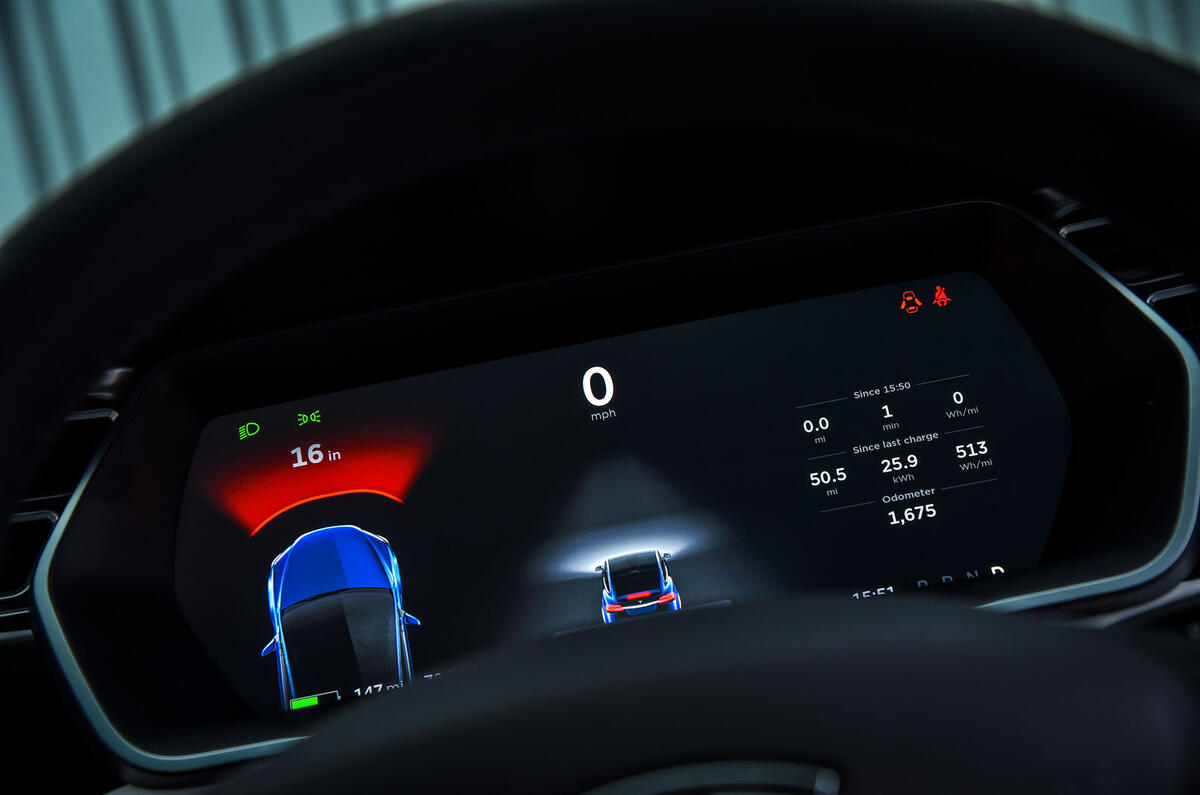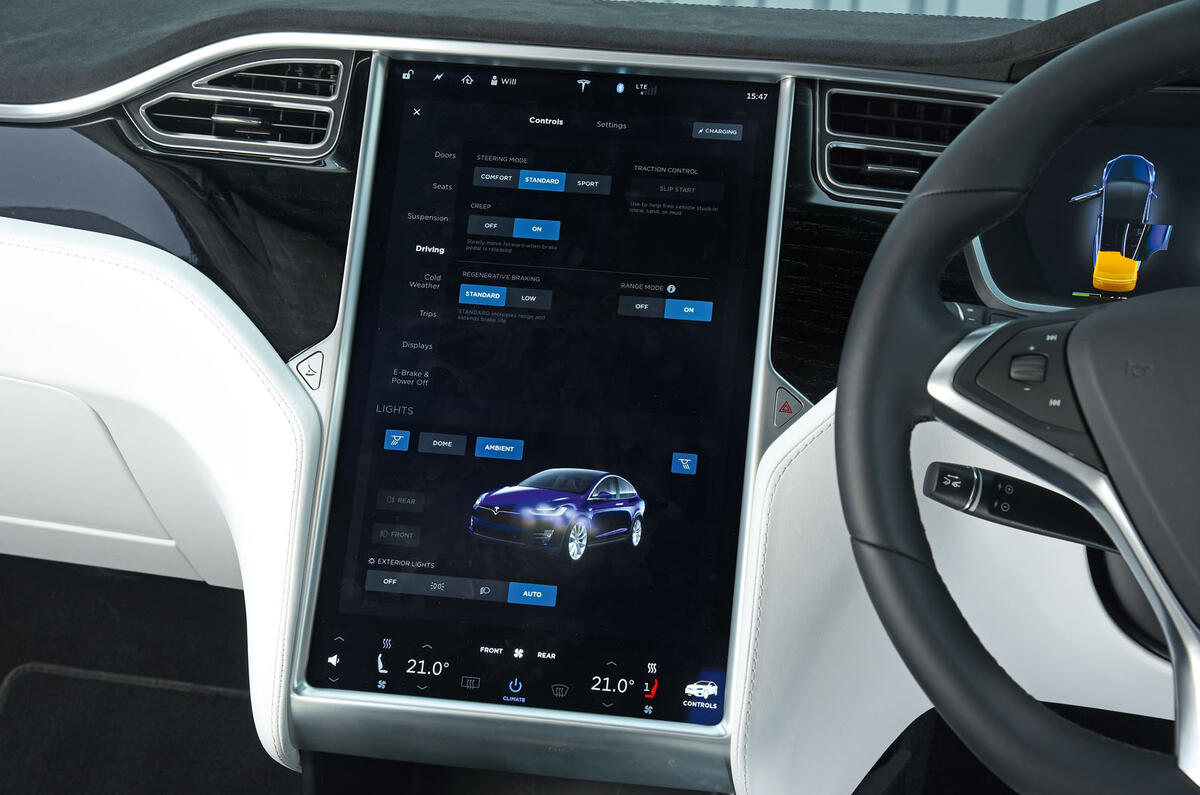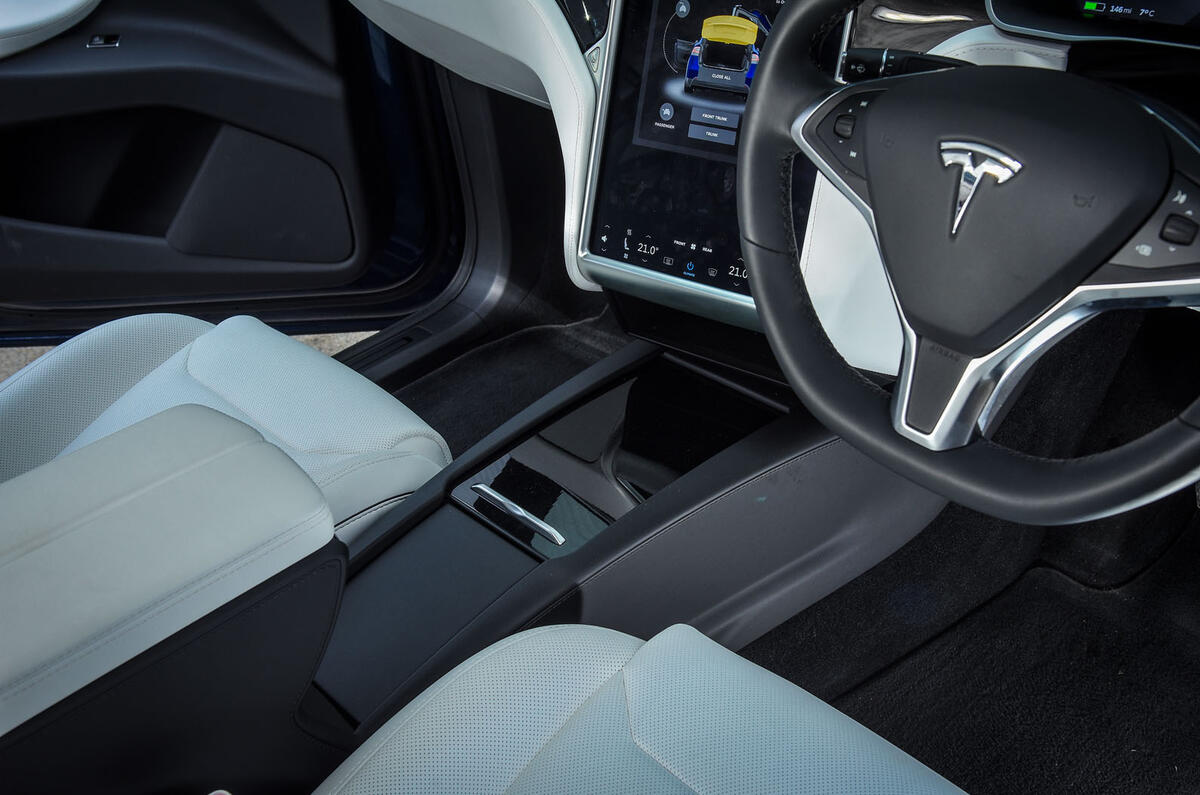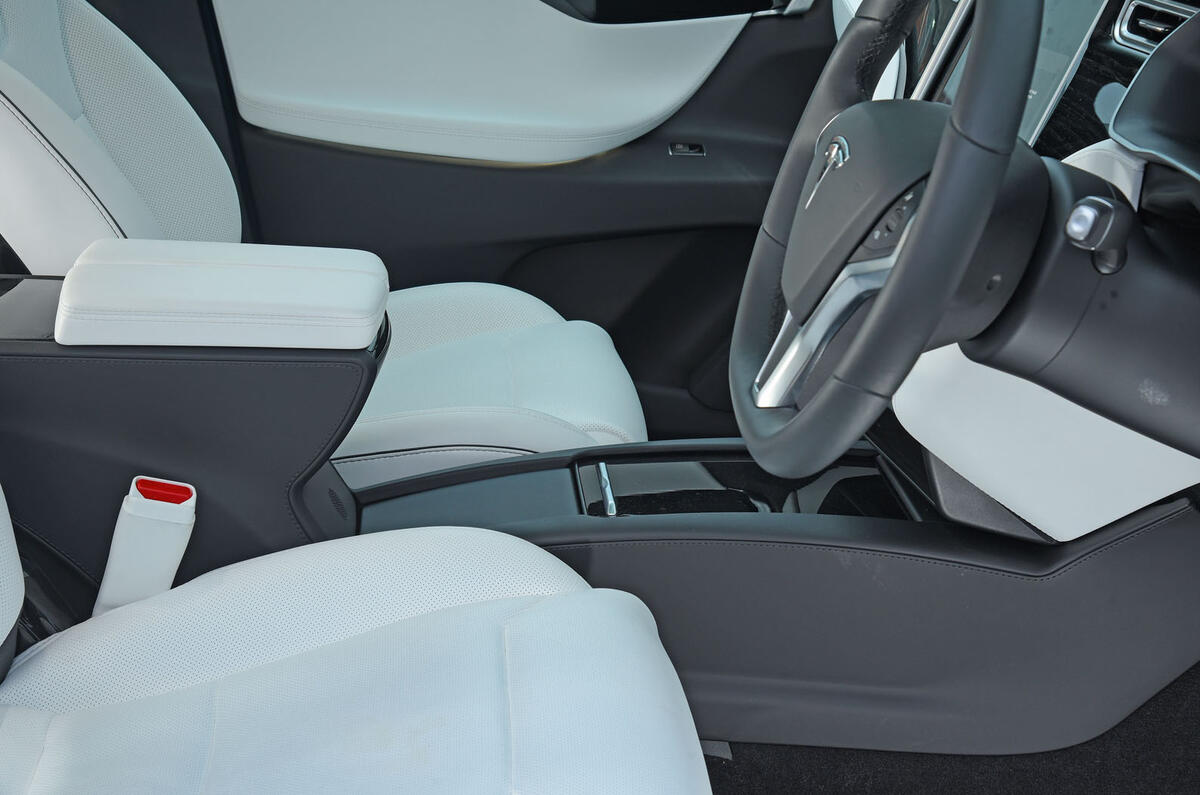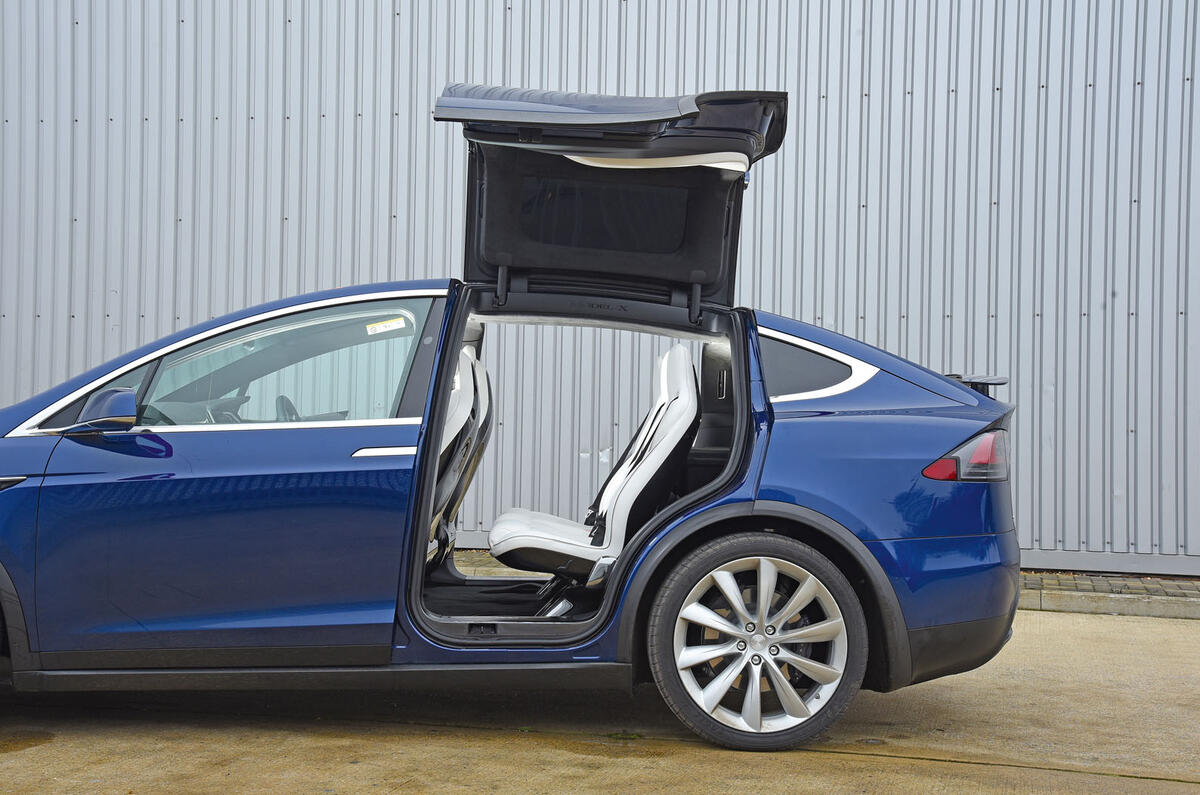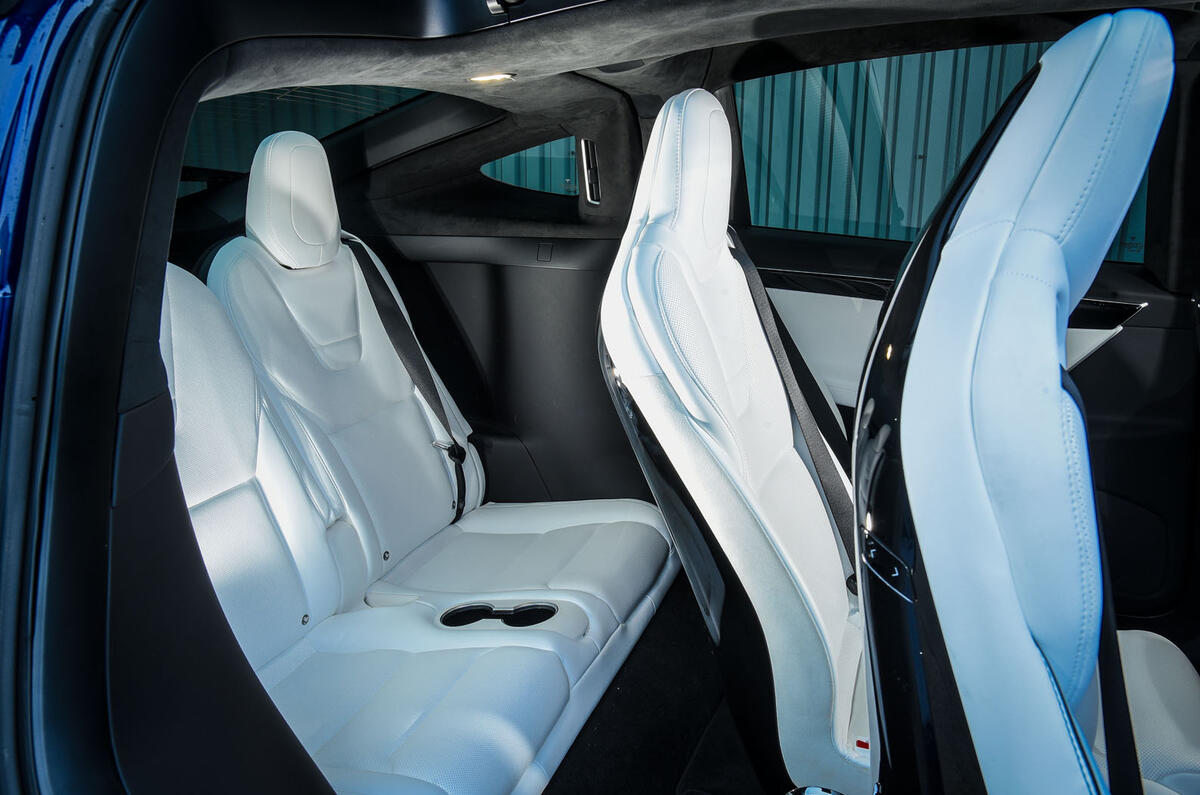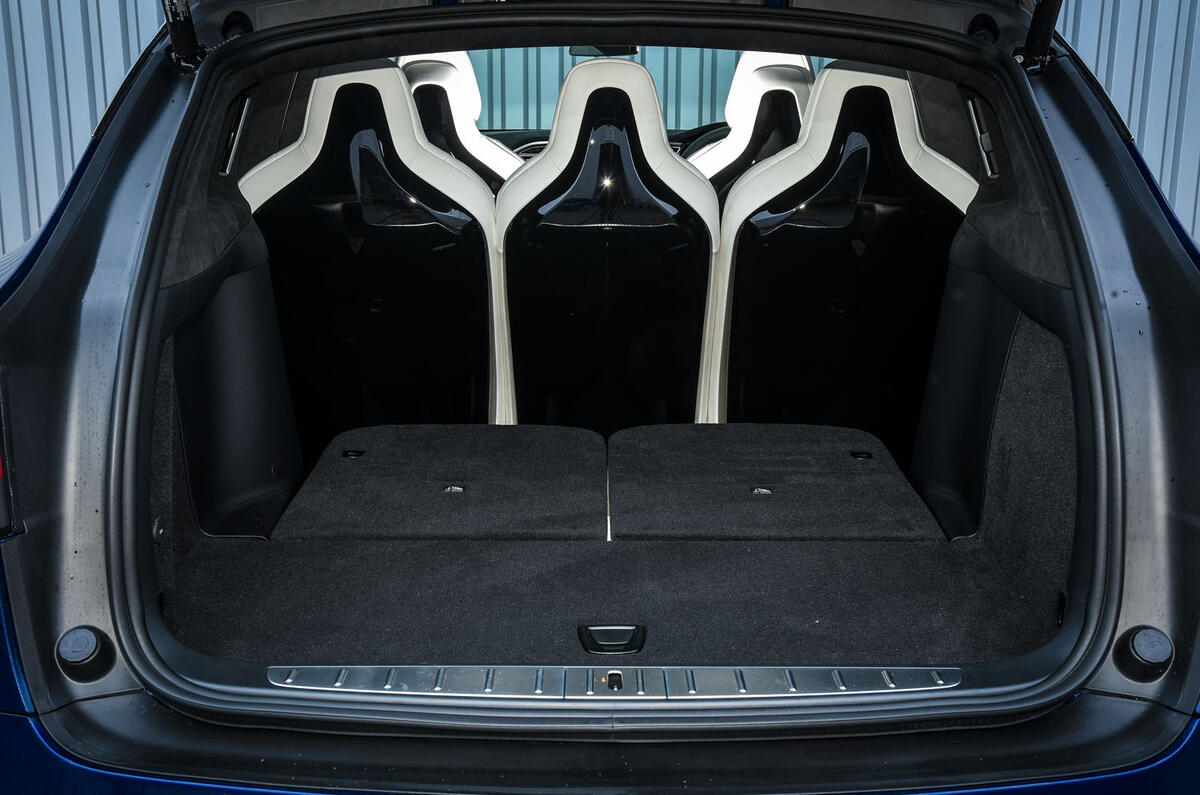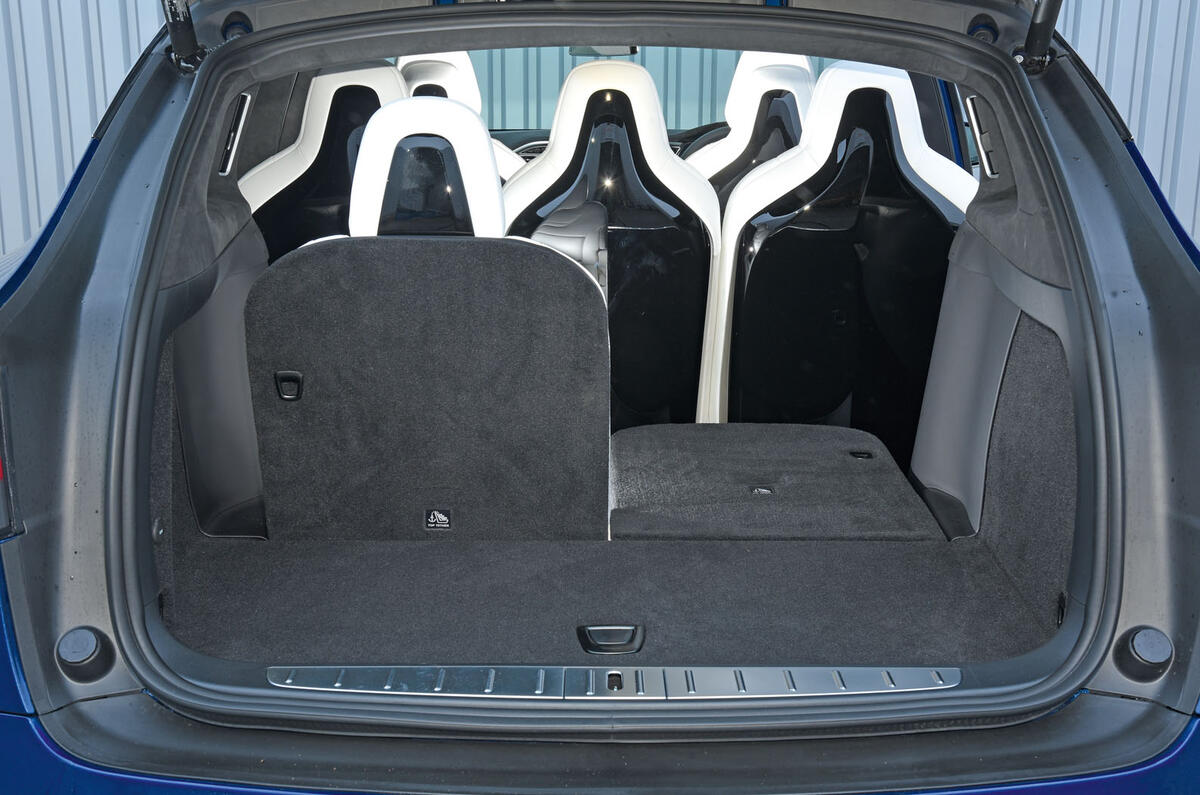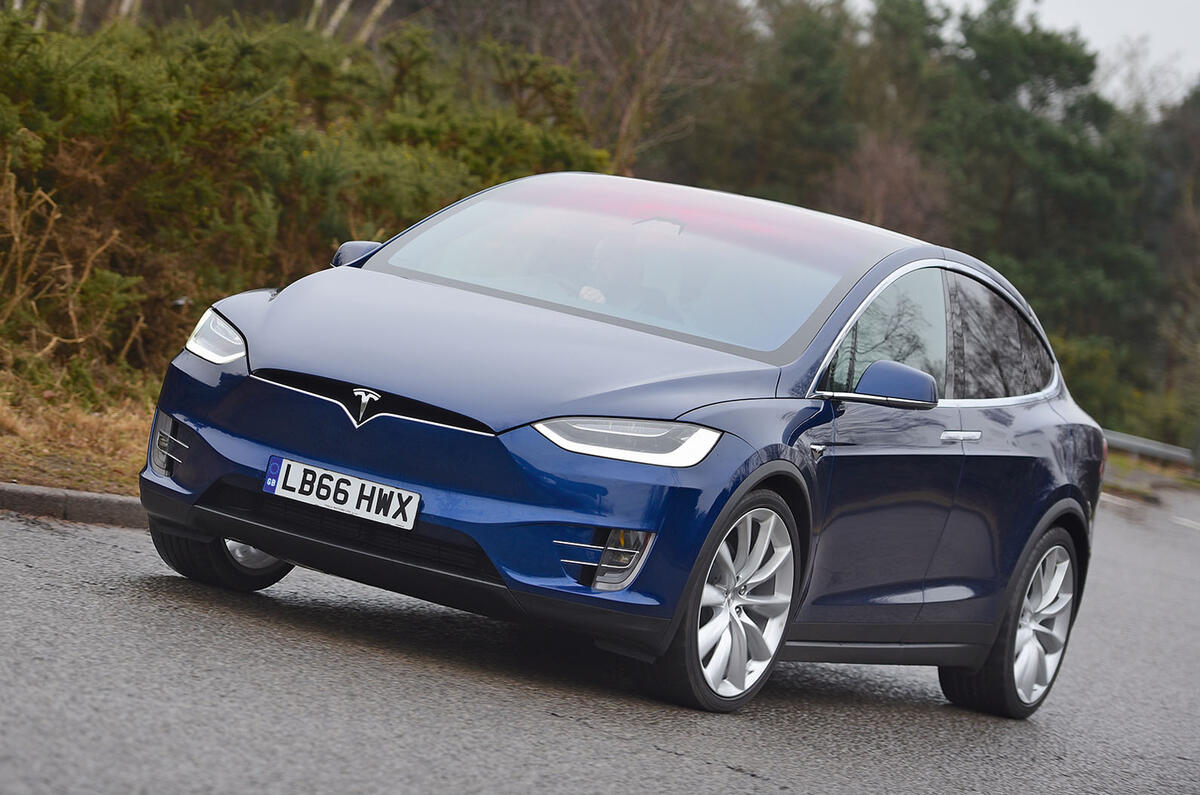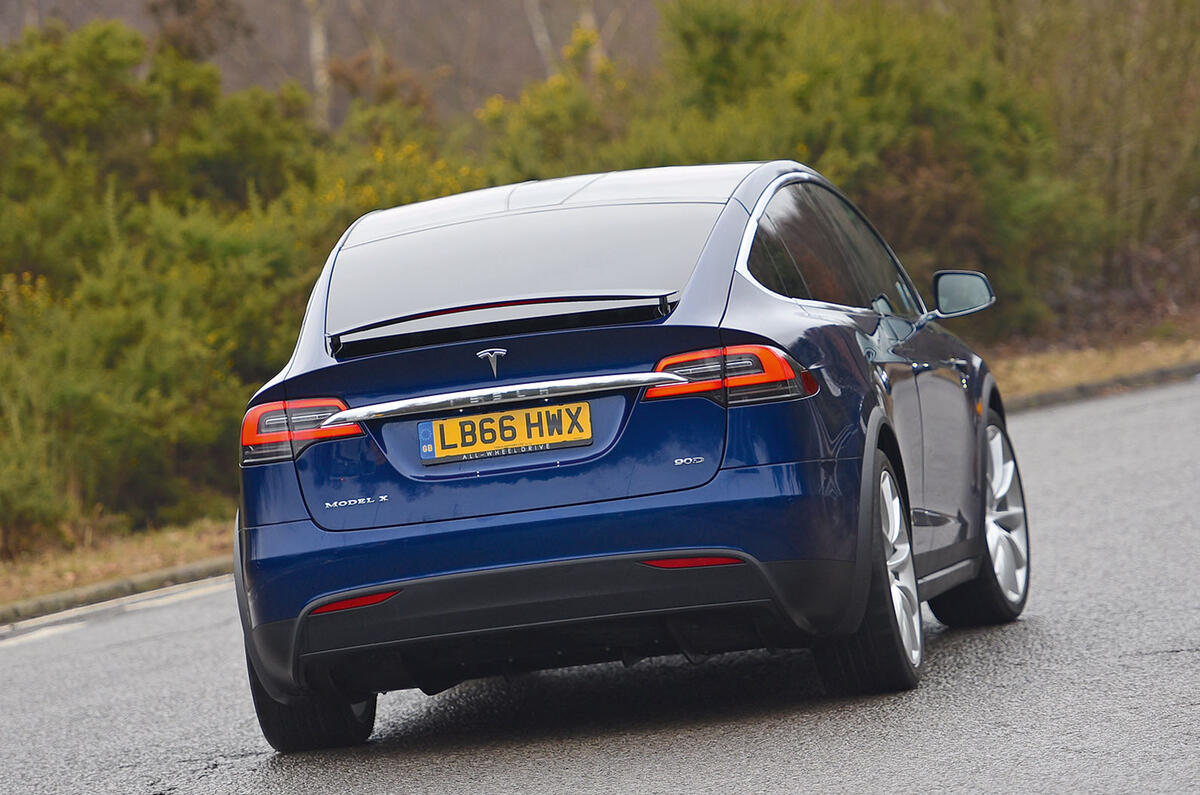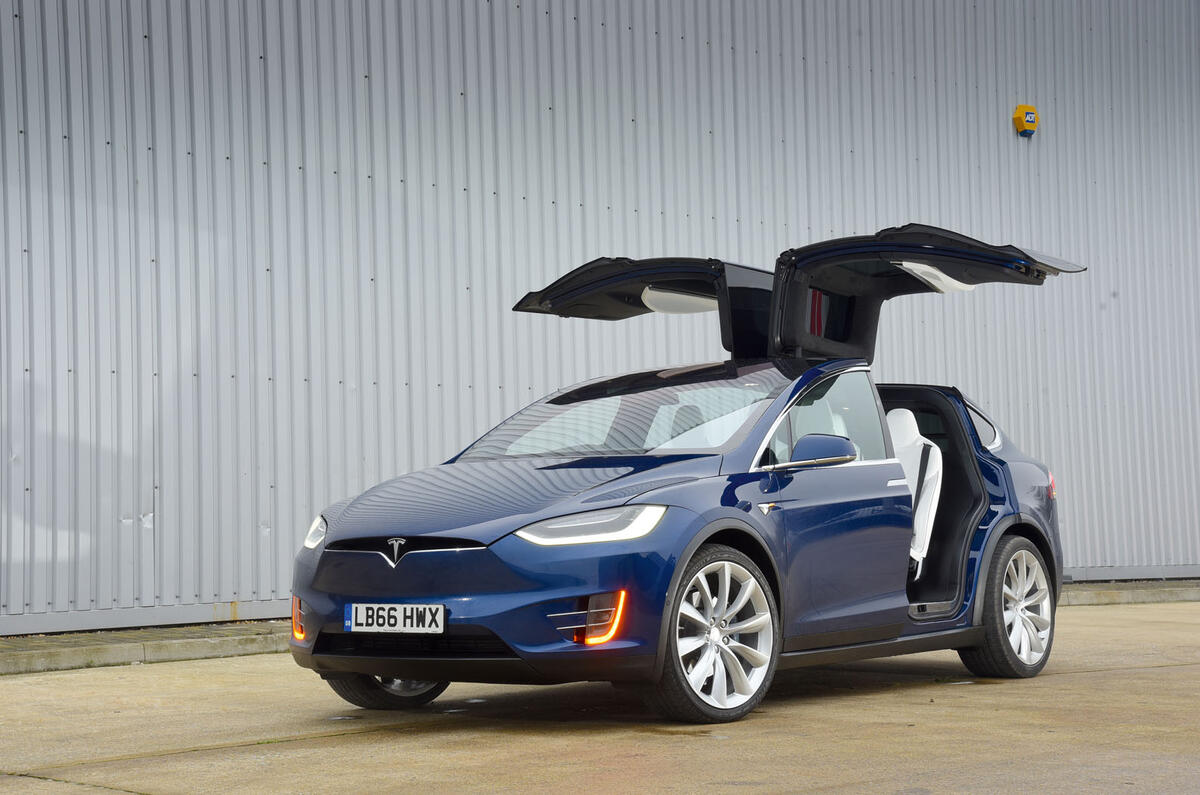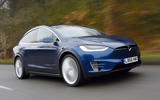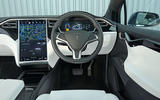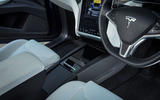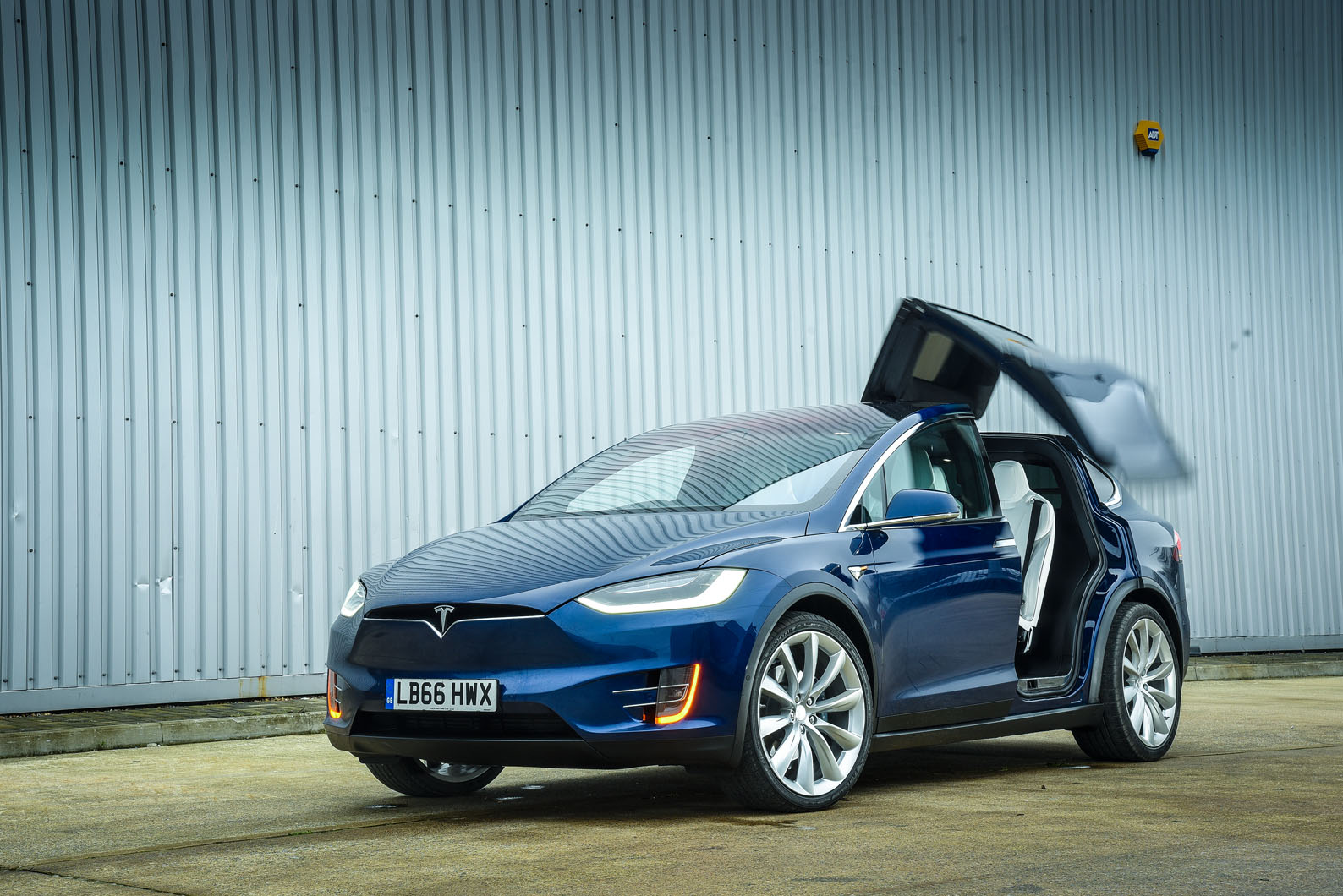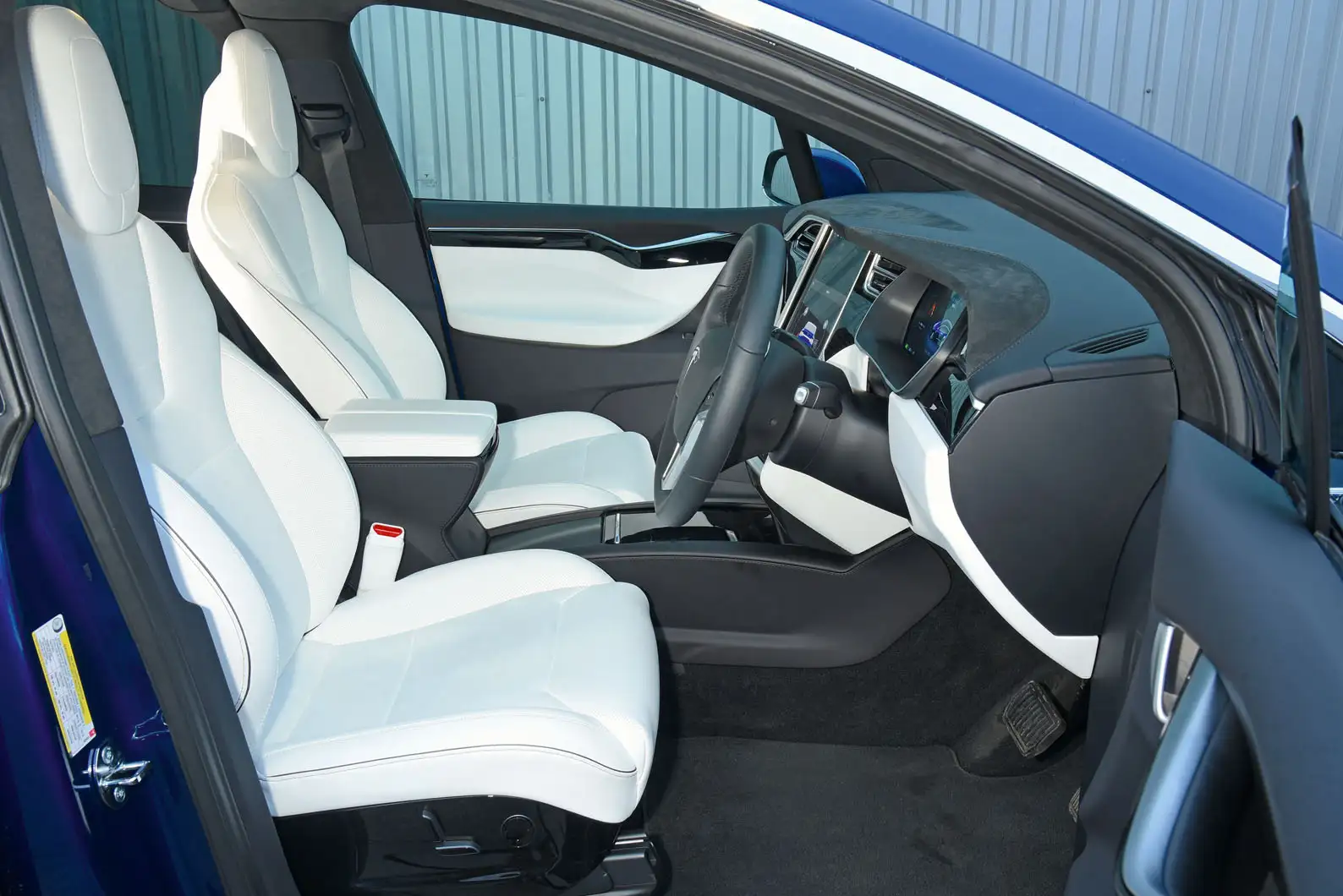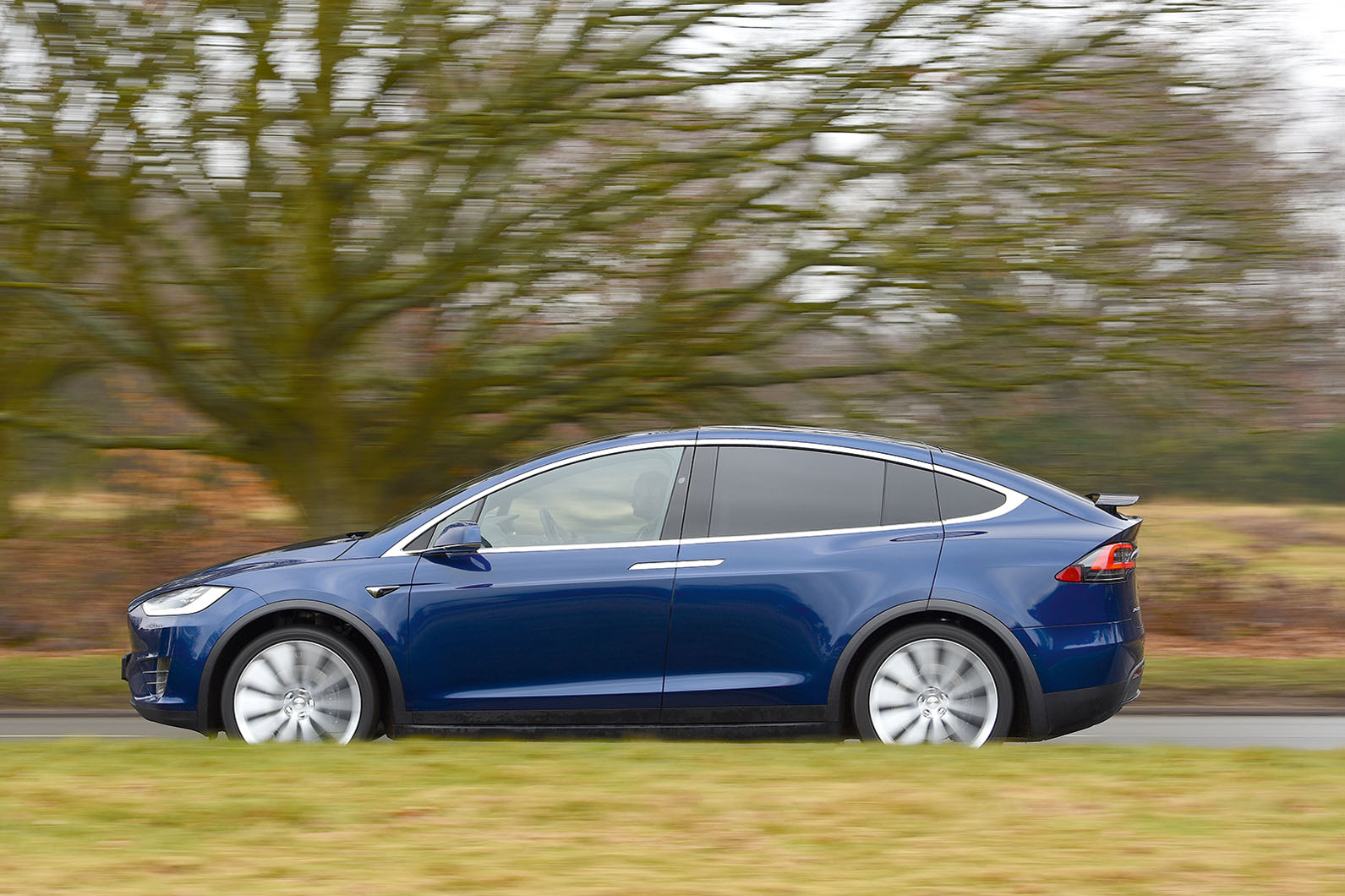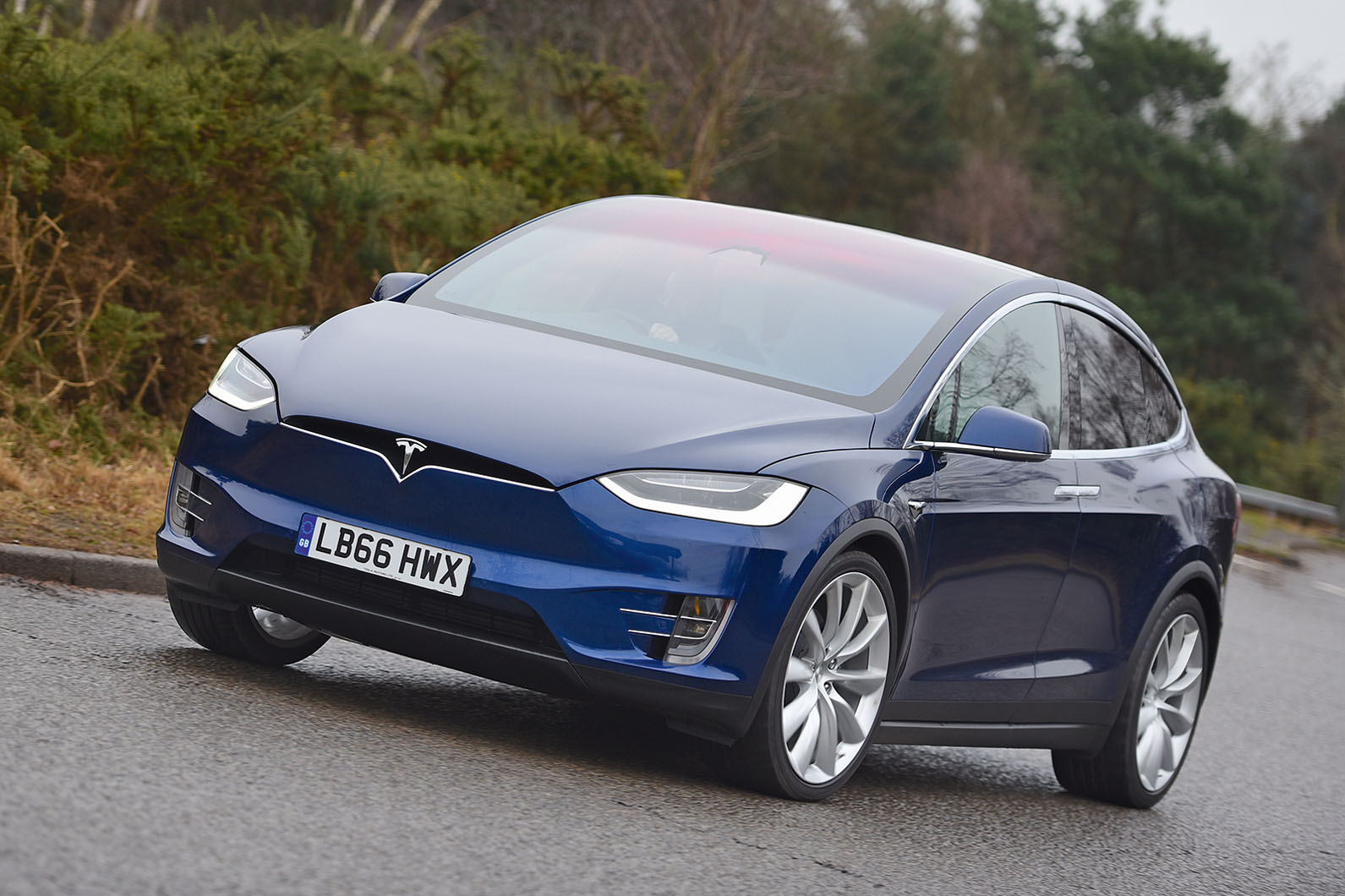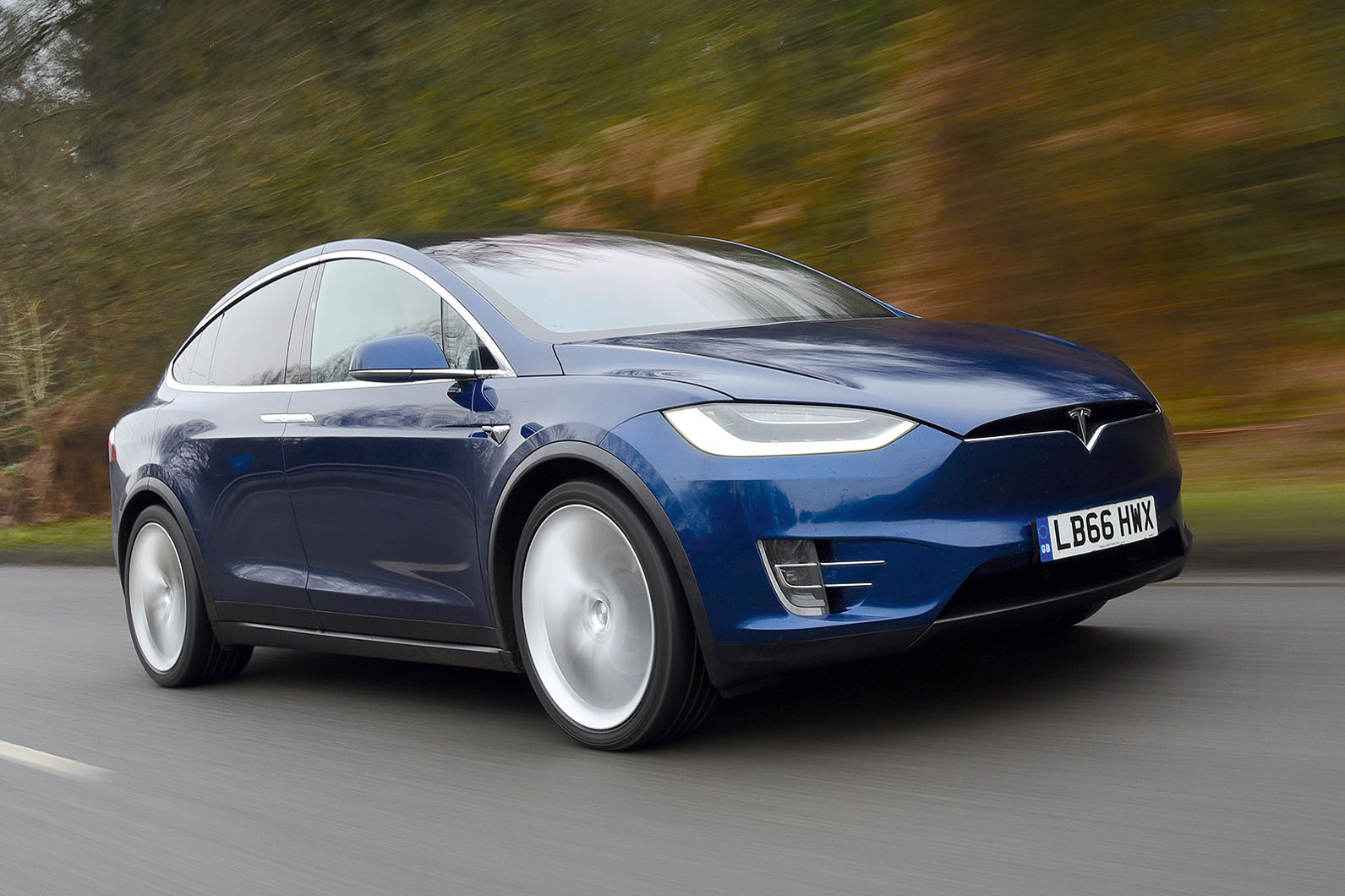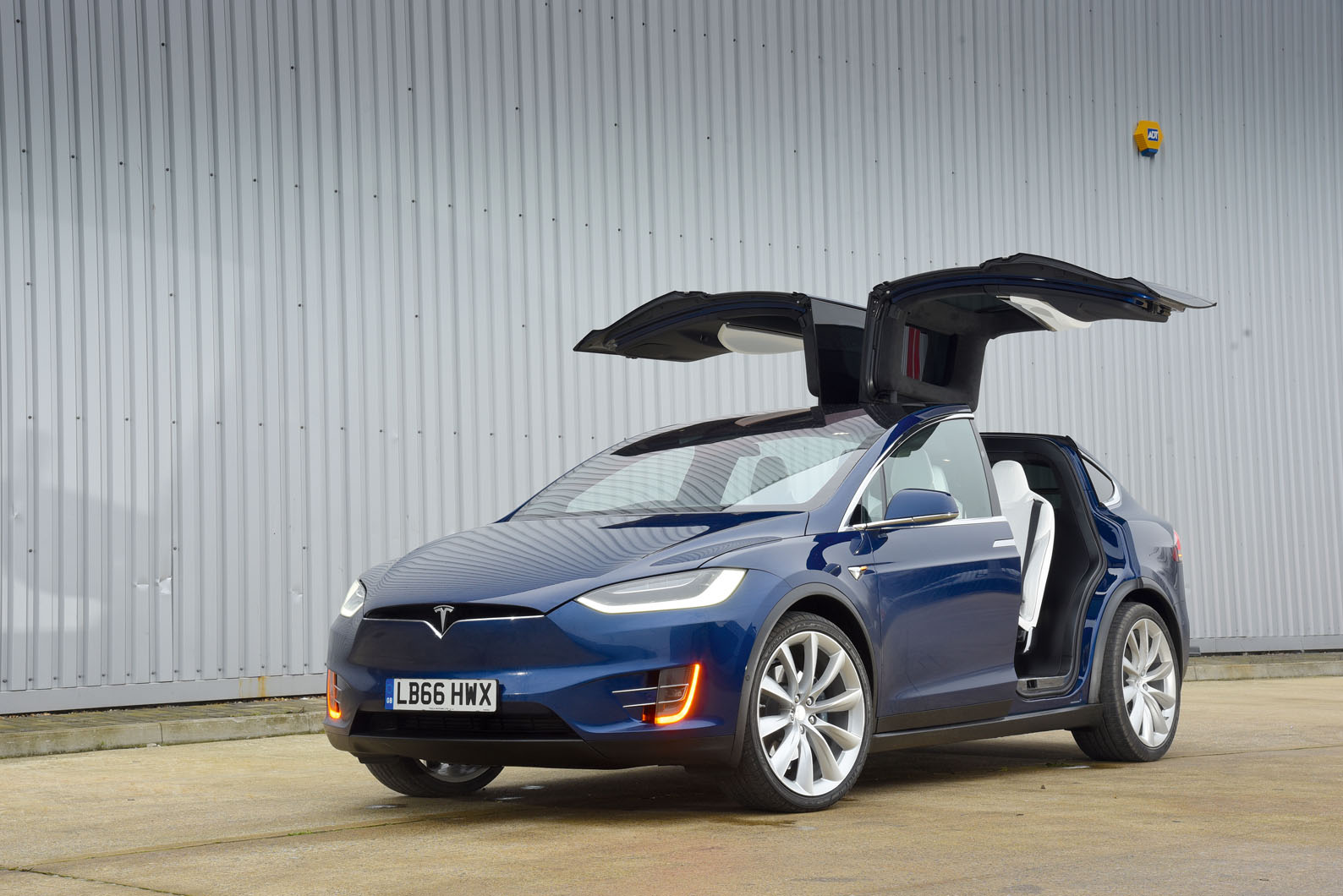Cranking up the ‘wow’ factor to implausibly high levels is already the calling card of Tesla’s brief existence, and there’s no question that the Tesla Model X’s automated doors contribute bullishly to that progressive theme.
The motorised front doors, which gently puff towards you once the handle is pressed, are at least familiar from the Tesla Model S.
But it’s the rear doors – which bring to mind a DeLorean and about a dozen other sci-fi movie props – that are the real coup de grâce.
Admittedly, they take some getting used to; they are neither speedy nor particularly elegant in their mechanism, and nor are they as solidly put together as a conventional alternative. They are also extravagantly exhibitionist; any child emerging from their shadow can expect (for a good while, at least) to be stared at.
Egress from them, though, is impressively unimpeded. The advantage of the doors is that they lever a significant portion of the roof off, meaning that occupants simply slide out without having to scrunch themselves into the right shape first.
This is particularly noticeable when exiting the third row, a process that is normally ripe with trip hazards. Tesla claims the doors need less space than the sliding variant often seen on big MPVs, although in our experience the sensors seemed keen to have plenty of room to work with. That’s fine in a Palo Alto parking lot but potentially less so at your local Tesco Express.
Inside, the layout and design theme are carried over from the Model S, so you get an unfussy dash almost entirely monopolised by the peerlessly vast infotainment screen that controls virtually every function short of actual driving.
The main point of difference between SUV and saloon, not unreasonably, is the heightened sense of space. The Model X feels especially big and airy, although less because of its panoramic windscreen and more because that is simply what it is, with its physical size affording enough space for three decently proportioned individual seats in the second row and two slightly smaller ones in the back.
Save for the unspectacular amount of head room given to occupants of the latter, rear seat passengers are unlikely to feel cramped, making the model a highly competitive rival for any conventional seven-seat SUV.
The boot is generous, too, and while you can’t put the middle row down, the absence of an engine means there’s significant additional storage space under the bonnet.
As with the Model S, a question mark hovers over build quality and material richness. The car is neither nailed together like a Porsche nor as pleasing to the touch as a Range Rover, but in roominess, practicality and desirous gadgetry, the Model X is commendably well endowed.
There are two schools of thought on Tesla’s giant-screen infotainment system. One is that it’s brilliant; the other is that it’s a little too large and distracting — but still brilliant.
The Model X has the latest 17.0in version, so you’re confronted with a portrait-orientated touchscreen that mimics a tablet PC. This is integral to both its desirability and functionality: it feels intuitive simply because its look is familiar from every computer ever, and you’ll probably want one for the same (mostly inexplicable) reason that people suddenly wanted an iPad.
This must-have appeal helps paper over the fact that cycling through on-screen menus still isn’t the optimum way to operate everything in a moving car, and the fact that — fantastic web browser aside — it’s not necessarily doing anything that its rivals haven’t since thought of.
Be that as it may, it’s been four years since the introduction of the Model S, and Silicon Valley’s concept of in-car, always-online infotainment still has a likeable tendency to make the rest of the mighty car industry look irredeemably backward.


